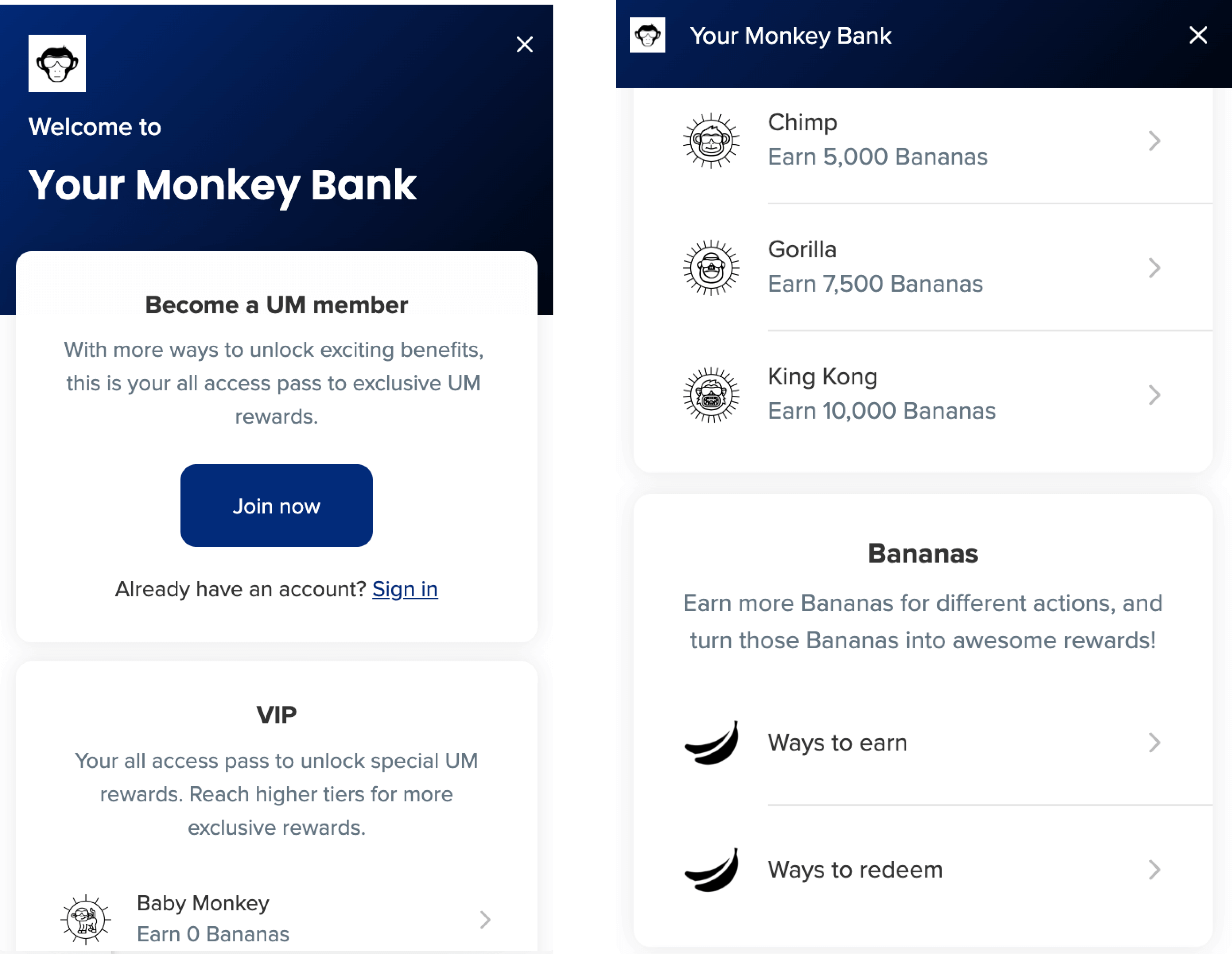We’re sure you can think of a few brands that you will shop with regardless of sales, discount codes, and special promotions. Now ask yourself why you buy from them. Chances are they’ve done something to build a real emotional relationship with you—one that’s not based on how much you saved or the perceived discount you got.
A study by Gallup found that 70% of customer decisions and purchases are based on emotion. 70% When you consider this, it’s not hard to understand the positive impact emotional connections can have on your business. The challenge of course is actually developing these relationships which, when separated by a screen, can feel challenging.
Value-add marketing is the key to emotional connections
While it may feel harder to connect with your customers without seeing them face-to-face, there are tons of ways to tug at their heartstrings. The key is to mimic the offline retail experience through value-add marketing.
Value-add marketing is an empathetic approach to marketing that delights customers by delivering value above and beyond the purchase of a product.
By creating a brand experience that goes above and beyond what customers expect from your brand, you make it possible for them to immerse themselves in it. This immersion creates positive emotions that they will then begin to associate with your brand as a whole. Now, you’re giving them more than the opportunity to buy a product—you’re inviting them to take advantage of everything your brand could possibly offer.
Through social, blog, video, rewards, and content marketing, you can create more touchpoints for customers to connect to different parts of your brand, deepening their connection with your brand whether they’re behind a screen or not.

Community is the goal of value-add marketing
While value-add marketing is a highly effective way to build emotional connections with your customers beyond the screen, it doesn’t stop there.
You can deepen the relationships your value-add initiatives create by using those strategies as tools to build a larger brand community. That’s because the emotional connections value-add marketing creates go further than simple customer satisfaction. They also serve as the chance to introduce each customer to a larger community that shares your brand’s values.
This expands your brand experience beyond the confines of simply spending money at your store and allows them to understand more about who you are and why you started your business in the first place!
These types of relationships make shoppers more willing to continue investing in your store over time. This is proof that customers who feel connected to the brands they shop with are more valuable long-term, which means investing in these customers and relationships sets you up for long-term sustainable growth.
When you create opportunities for customers to engage with both your brand and each other, you create a brand experience ripe with reciprocal relationships.
Here are some of the best ways to use value-add marketing to build a thriving brand community.
Make your brand transparent with visual content
Visual content is one of the quickest and most impactful ways to connect with your customers because it makes your brand feel more human.
When you include pictures of the people behind your brand in your marketing content and online experience, you create an opportunity for people to connect with you on a one-to-one basis. People trust other people, not faceless brands, so putting faces to your brand’s reputation helps customers feel comfortable at every stage in their experience with you—even if you’re separated by a screen! This comfort is what prompts them to want to join your community and stay engaged beyond their first purchase.
Métis + female-founded candle brand, Land of Daughters is the definition of authenticity and vulnerability. In an Instagram post, founder Paide shares her personal story and struggle with intergenerational trauma from residential schools and discrimination as an Indigenous woman. Customers are able to understand the brand and its story through this authenticity, allowing them to form an emotional connection with both Land of Daughters and Paige. No matter what your story is, sharing transparent social media posts is a great way to connect.
Photo and video content can also help establish who your brand is and what you value in a matter of seconds. The human brain can understand images in as few as 13 milliseconds, making it easy for customers to not only envision themselves as part of your community but also understand who you are and what they’re investing in.
This is even more effective when you leverage your existing community members to do it. Inkbox, a temporary tattoo brand, prominently features its customers’ Instagram photos and shares them on its homepage. Through each of the photos on display, new customers are invited to experience the inkbox community and what makes it special, getting a glimpse at the story inkbox has been telling since it launched.
/you-need-ugc-feature.png)
When new customers see existing members enjoying your brand, you’re given the opportunity to play up those positive emotions by helping them envision how they could experience those things themselves as part of your community.
Build an authentic brand story
One of the best ways to connect with your customers is through your brand story. The story you tell defines what makes you different, and refusing to compromise that identity is what attracts like-minded customers to your community. When you make your values visible online, you can trust that they’ll resonate with your target audience and bring people to your brand who actually want to get to know you.
This desire is what will create a resonance that keeps your brand top-of-mind. When you market to a specific group of people as opposed to the world at large, you quickly establish that their needs are more important than yours. Understanding how they want to be communicated with allows you to develop your brand and build trust by using their language as you weave the story of who you are and why they should join your community.
Lululemon is a fantastic example of using a brand story to build a strong community. At first glance, they might not look that different from any other fitness wear brand. However, there’s more to them than that.
By marketing their products as luxury athleisure wear, they aligned themselves with customers who are looking for the highest quality products to complement their lifestyle choices. With no mention of a clearance, outlet, or sale section on their site, they promote their brand community as one that values performance and style above all else–a fact they’re unapologetic about.

These factors have combined to build a brand “personality” that values function, comfort, and style over price, and each of these things is visible at every level of the company. From their website to their retail locations to their interactive at-home programs, they remain true to their brand’s story at all times. While it won’t appeal to everyone, it does appeal to many. As a brand Lululemon has built its experience with these customers in mind.
As a result, their community taps into the emotions their customers already feel about products like theirs. Through value-add marketing like video, social, and blog content, Lululemon uses these feelings as the gateway to long-lasting relationships.
Focus on building a community with rewards
Communities are as effective as they are because emotions are influenced by groups. We like sharing our lives and experiences with others and look for opportunities to do so.
Rewards programs are the perfect vehicle for driving the desire to stay connected because they give your customers a reason to stay engaged. Referrals, VIP tiers, and points combine as the perfect package for encouraging customers to see themselves as part of your brand community and empowering them to invite others to join.
Brands like Lucy and Co. and Urban Monkey have been finding success with this form of value-add marketing. While both are in dramatically different industries, they were each able to use reward programs to enrich their online experience and larger community. By clearly establishing reciprocal relationships that benefit both themselves and their customers, these brands kept customers engaged and established a sense of trust that makes each relationship more authentic and customer-focused.

With valuable rewards on the table, and a branded loyalty experience from their explainer page to program name and VIP tier names, both brands were able to establish their loyalty program as a place where their brand and customers intersect. Even though their stores are online, their rewards program helps customers grow, explore, and deepen their connection with the brand through each interaction.
The best part is that this is something any brand can do! Whether you already have an existing community or are looking to build a new one, rewards are a form of value-add marketing guaranteed to help you develop feelings of comfort and familiarity with each individual customer. By allowing them to choose the rewards that resonate most with them, you can establish a deep-rooted, emotional commitment to your brand that breeds ongoing relationships.
Be consistent by producing content regularly
Since every customer is different, they won’t all like to engage in the same ways. Giving them options of how to find you and the rest of your community increases the odds of them finding value in what you have to offer and becoming excited to join your community as a result.

As we mentioned earlier, blogs, social media platforms, and YouTube channels are all other great ways to expand the reach of your brand and create more ways for customers to fall in love with you. Taking advantage of these different ways to stay connected makes your brand more accessible while helping you tell more of your brand story.
Semicured gel nail brand, Jelcie has done an incredible job of using value-add marketing to fuel their community through an organic content marketing strategy. Not only do they run a fantastic rewards program, but they also offer a number of other nail resources for their community to take advantage of. With an impressive video library on YouTube, beautiful inspiration pictures and videos on Instagram, and interactive Q&As on TikTok, Jelcie uses social media effectively to keep customers connected to its brand.
The key to this strategy is consistency. Value-add marketing is only truly valuable if it’s maintained over time, especially when your customers can’t interact with you in a physical space. As customers become accustomed to the experience you offer, they’ll begin to expect it as one of the perks of your brand community. That means you need to maintain it.
Creating a winning content strategy and staying consistent will provide further incentives for new customers to join your community, stay engaged, and share it with others.
Overcoming the screen between to build real connections
As ecommerce continues to grow, the importance of your online experience and brand community will only increase. That’s why it’s so important that you understand how to leverage value-add marketing and the incredible customers you already have to form an airtight community that supports, follows, and engages with your brand.
You can do that in a number of ways:
- Make your brand transparent with visual content.
- Build an authentic brand story.
- Focus on building a community with rewards.
- Be consistent by producing content regularly.
With these four strategies guiding your experience, you can use value-add marketing to your advantage as you build a community that continues to delight, inspire, and exceed your customers’ expectations.
After all, these are the emotions that lead to real connections with your customer—whether they’re behind a screen or directly in front of you.
Editor’s Note: This post was originally published on July 17, 2018 and was updated for accuracy and comprehensiveness on February 22, 2023.









